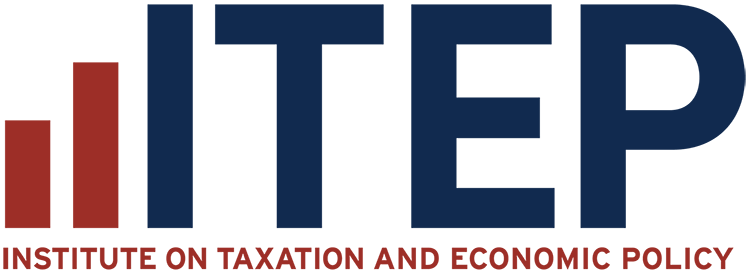Economically and racially equitable tax systems are essential to adequately funding education, health, childcare, affordable housing, and other shared priorities. This is especially true at the local level, where the connection between revenue and the quality of public services is extremely clear.
Our local work explores how to rebalance local taxes, including but not limited to:
• Shifting away from fines and fees as revenue-raisers,
More Local Research
By Content
By Author
All Authors
Aidan Davis
Alan Essig
Alex Welch
Ambika Sinha
Amy Hanauer
Andrew Boardman
Brakeyshia Samms
Carl Davis
Dacey Anechiarico
David Crawford
Devin Douglass
Dylan Grundman O'Neill
Eli Byerly-Duke
Emma Sifre
Erika Frankel
Estefan Hernandez Escoto
Felicia Smith
Galen Hendricks
Guest Blogger
Ian Berlin
ITEP Staff
Jenice Robinson
Jessica Schieder
Jessica Vela
Joe Hughes
Jon Whiten
Kamolika Das
Lisa Christensen Gee
Lorena Roque
Marco Guzman
Matthew Gardner
Meg Wiehe
Michael Ettlinger
Miles Trinidad
Misha Hill
Monica Miller
Moore v. United States
Neva Butkus
Nick Buffie
Nick Johnson
Peter Della-Rocca
Reggie Rucker
Richard Phillips
Rita Jefferson
Ronald Mak
Sarah Austin
Sasha Pudelski
Spandan Marasini
Stephanie Clegg
Steve Diese
Steve Wamhoff
By Focus
All Areas
2025 tax debate
Alabama
Alaska
American Families Plan
American Jobs Plan
American Rescue Plan
Arizona
Arkansas
Biden Tax Plan
Budget
Build Back Better
California
Cannabis Taxes
Capital Gains
Carbon Tax
Census
Child Tax Credit
City-Level Policy
Climate
Colorado
combined reporting
Connecticut
Corporate Tax Watch
Corporate Taxes
COVID-19
Deficit
Delaware
District of Columbia
Education Tax Breaks
EITC
Election 2020
Election 2024
Estate Tax
expert
Federal Policy
Financial Transactions Tax
Fines and Fees
Flat Tax
Florida
Gas Taxes
Georgia
GILTI
Global Minimum Tax
haw
Hawaii
Health Care and Taxes
HEROES Act
Idaho
Illinois
Immigration and Taxes
Income Taxes
Indiana
Inequality
Inflation Reduction Act
Iowa
IRS
Itemized Deductions
ITEP State Rundown
ITEP Weekly Digest
Kansas
Kentucky
Local Property Taxes
Louisiana
Maine
Mandatory Repatriation Tax
Maps
Maryland
Massachusetts
Medicare tax
Michigan
Minnesota
Mississippi
Missouri
Montana
Moore v. United States
Nebraska
Nevada
New Hampshire
New Jersey
New Mexico
New York
North Carolina
North Dakota
Offshore Tax Avoidance
Ohio
Oklahoma
Opportunity Zones
Oregon
Payroll Tax
Pennsylvania
Philadelphia
private equity
Property Taxes
Racial Equity
Racial Wealth Gap
Refundable Tax Credits
Regressive Taxes
Retirement Tax Breaks
Rhode Island
Sales Taxes
SALT
Social Security
SOTU
South Carolina
South Dakota
State Tax Watch
Stock Buybacks
Stock Options
Supply-Side Economics
tax
Tax Breaks
Tax Credits for Workers and Families
Tax Cuts
Tax Cuts 2.0
Tax Cuts and Jobs Act
Tax Extenders
Tax Reform
Taxing Wealth and Income from Wealth
Tennessee
Testimony
Texas
tr
Transition Tax
Trump Tax Policies
Trump-GOP Tax Law
Utah
Vermont
video
Virginia
Vouchers
Washington
Wealth Gap
Wealth Tax
West Virginia
Who Pays?
Wisconsin
Worldwide Combined Reporting
Wyoming
Research Category
All Categories
Fines and Fees
Local Income Taxes
Local Policy
Local Property Taxes
Local Refundable Tax Credits
Local Sales Taxes

